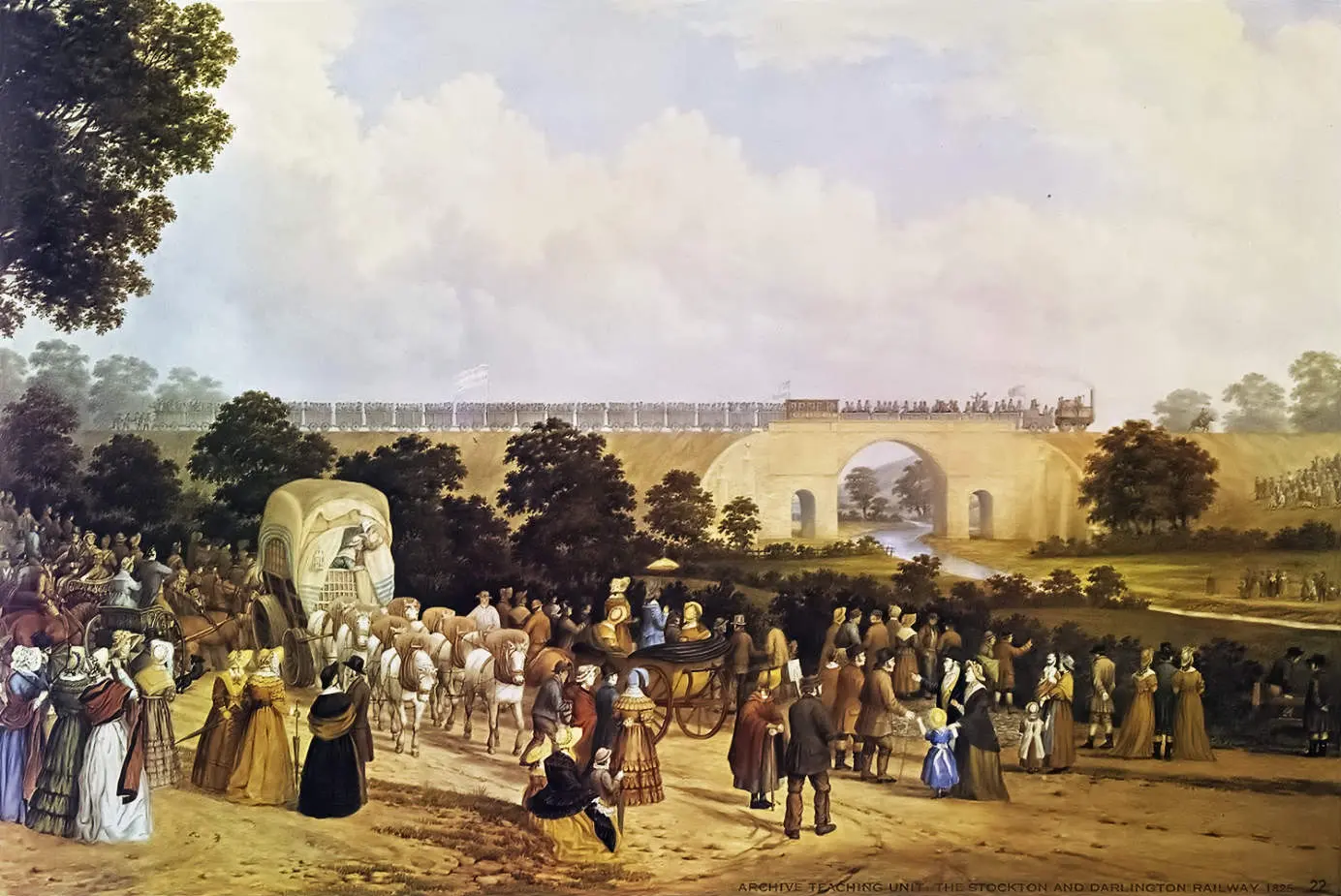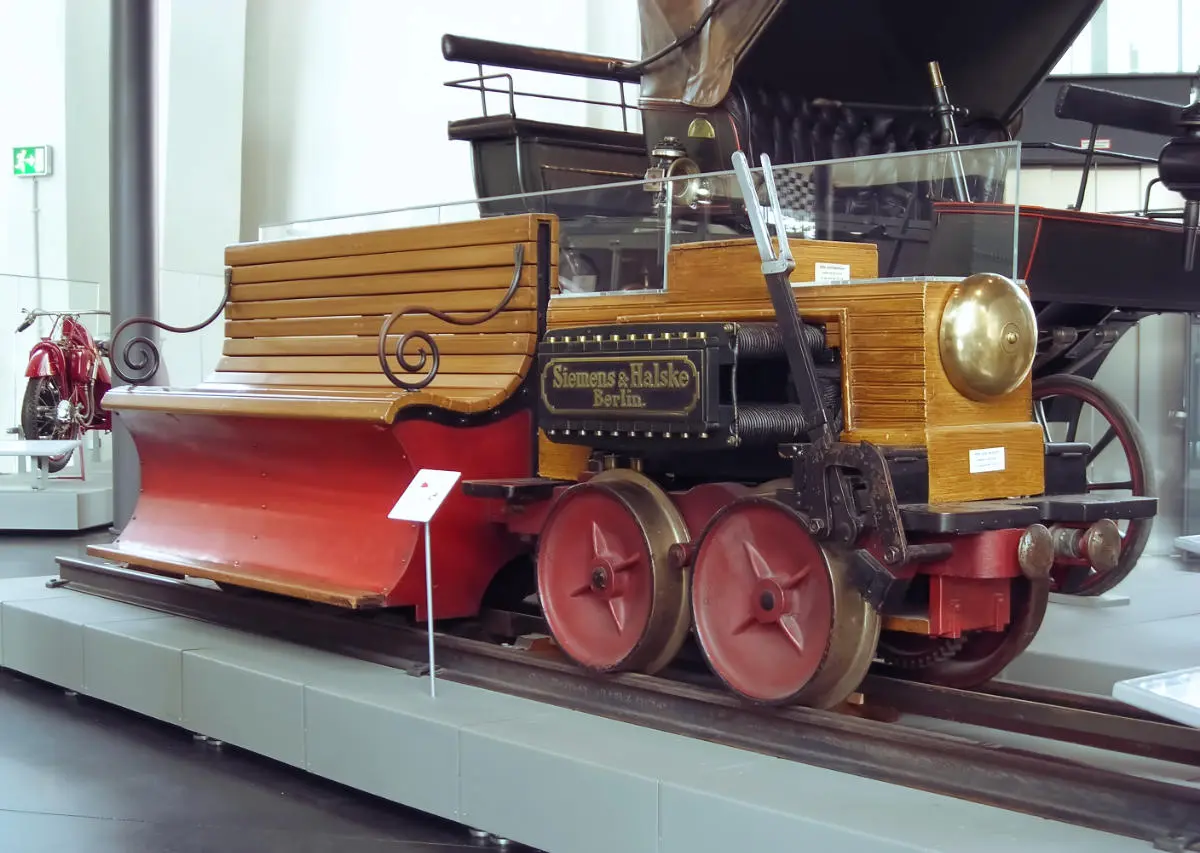The History of the TGV Train - From Concept to Icon
Explore the rich history of the TGV train, the iconic high-speed railway system in France. Learn about its development, technological advancements, and impact on transportation.
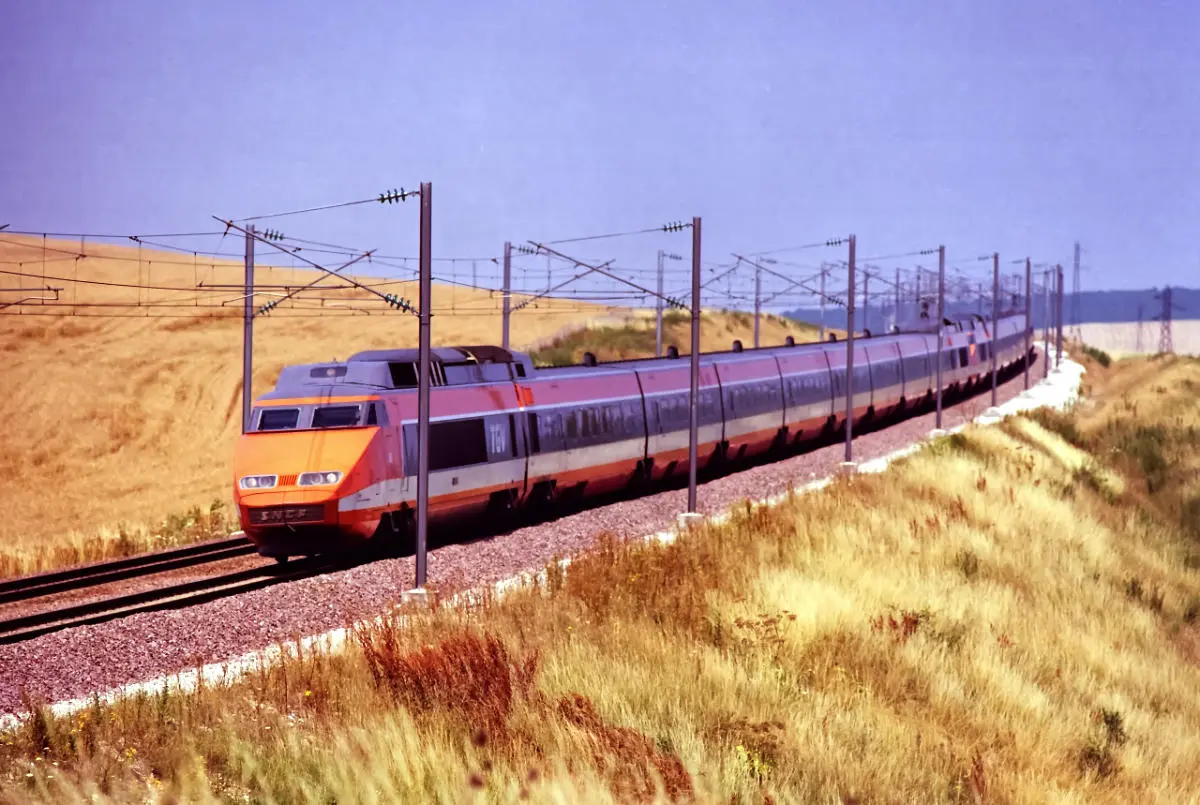
The TGV train history is a fascinating tale of innovation, ambition, and success that transformed rail travel not just in France, but around the world.
As a symbol of modern transportation, the TGV (Train à Grande Vitesse) stands as a testament to the engineering marvels that define high-speed rail.
In this blog post, we will explore the inception of the TGV, its development over the years, and its enduring impact on travel and transportation systems globally.
What Is a TGV Train?
The acronym TGV stands for "Train à Grande Vitesse," which translates to "High-Speed Train" in English. This remarkable mode of transportation is designed to travel at speeds exceeding 300 kilometers per hour (about 186 miles per hour), making it one of the fastest trains in the world. The TGV trains feature a sleek and aerodynamic design that minimizes air resistance, contributing to their ability to achieve such high velocities. These trains are not only engineered for speed but also efficiency and environmental sustainability, offering a viable alternative to short-haul flights and reducing the carbon footprint associated with travel.
TGV trains are primarily used for intercity travel within France, linking major cities such as Paris, Lyon, Marseille, Lille, and Strasbourg. This extensive network allows passengers to travel quickly and comfortably across the country, significantly cutting down travel times compared to conventional trains. The interior of TGV trains is designed with passenger comfort in mind, featuring spacious seating, climate control, and amenities such as Wi-Fi and dining options.
A critical aspect of the TGV's success is its advanced technology. The trains operate on specially designed high-speed tracks, known as LGV (Lignes à Grande Vitesse), which are built to withstand the demands of high-speed travel. These tracks are equipped with sophisticated signaling systems that ensure safety and efficiency, allowing multiple trains to operate simultaneously without risk. Additionally, TGV trains employ advanced braking systems that enable them to stop quickly and safely even from their high operating speeds.
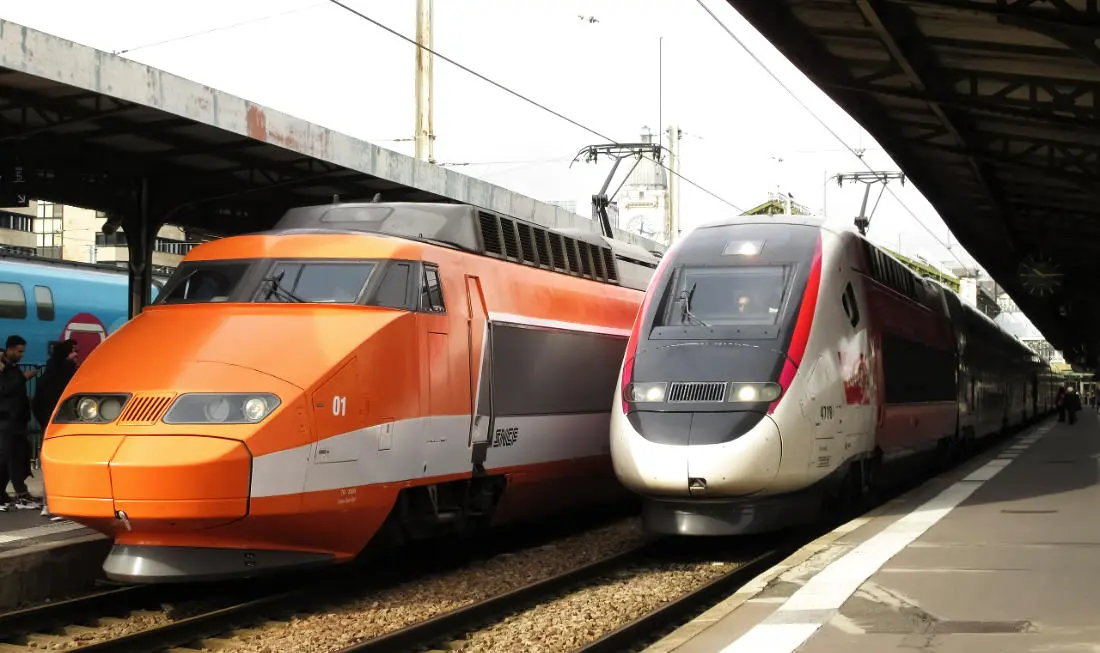
The TGV's impact extends beyond just faster travel times. By providing a reliable and efficient means of transportation, the TGV has helped to boost economic activity in the regions it serves, making cities more accessible and fostering greater connectivity. The development of the TGV network has also spurred advancements in rail technology, influencing high-speed rail projects around the world.
The Birth of a Vision for High-Speed Rail
The roots of the TGV can be traced back to the 1960s, a transformative era for transportation globally. Amid growing urbanization and increasing travel demands, France sought to revitalize its rail network to stay competitive and support economic growth. Inspired by Japan's Shinkansen, the world's first high-speed train, French engineers and policymakers began to conceptualize their own high-speed rail system.
This initiative was driven by a vision to connect major cities more efficiently and to reduce travel times drastically. The idea was not only to enhance passenger convenience but also to position France as a leader in transportation innovation. The initial concept centered around creating a train that could operate at unprecedented speeds while maintaining high safety standards and passenger comfort.
French National Railways (SNCF) took the lead in this endeavor, launching studies and gathering expertise from various engineering fields. The project attracted significant interest and debate, as it required an overhaul of existing rail technologies and infrastructure. Developing specialized tracks, known as Lignes à Grande Vitesse (LGV), capable of supporting high-speed travel was one of the primary challenges. These tracks needed to be straighter and more robust than conventional ones, incorporating advanced signaling systems to ensure safe and efficient operations.
Funding the ambitious project posed another set of challenges. The initial costs were daunting, prompting rigorous discussions on budget allocations and financial viability. Despite the hurdles, the project gained momentum, backed by both government support and public interest. The aim was clear: to create a high-speed rail network that would not only serve France but potentially set a global standard.
In the late 1960s, the first prototypes began to take shape, incorporating lightweight materials and aerodynamic designs that would become hallmarks of the TGV. Through continuous research, testing, and refinement, the vision of a high-speed rail network in France began to transition from a bold idea to a tangible reality.
Early Challenges and Development Stages
The journey to bring the TGV from concept to reality was fraught with numerous challenges. Initially, there was considerable skepticism about the feasibility of high-speed rail, with critics questioning both the technological and economic viability of such an ambitious project. Environmental concerns also surfaced, as the construction of dedicated high-speed tracks required significant land use and raised questions about potential ecological impacts.
In 1971, the establishment of the "SNCF TGV" program marked a significant step forward. However, the path to success was anything but straightforward. One of the main technical challenges was designing tracks capable of supporting sustained high speeds. Unlike conventional rail lines, the high-speed tracks needed to be exceptionally straight and robust, featuring advanced signaling systems to manage the increased velocities safely.
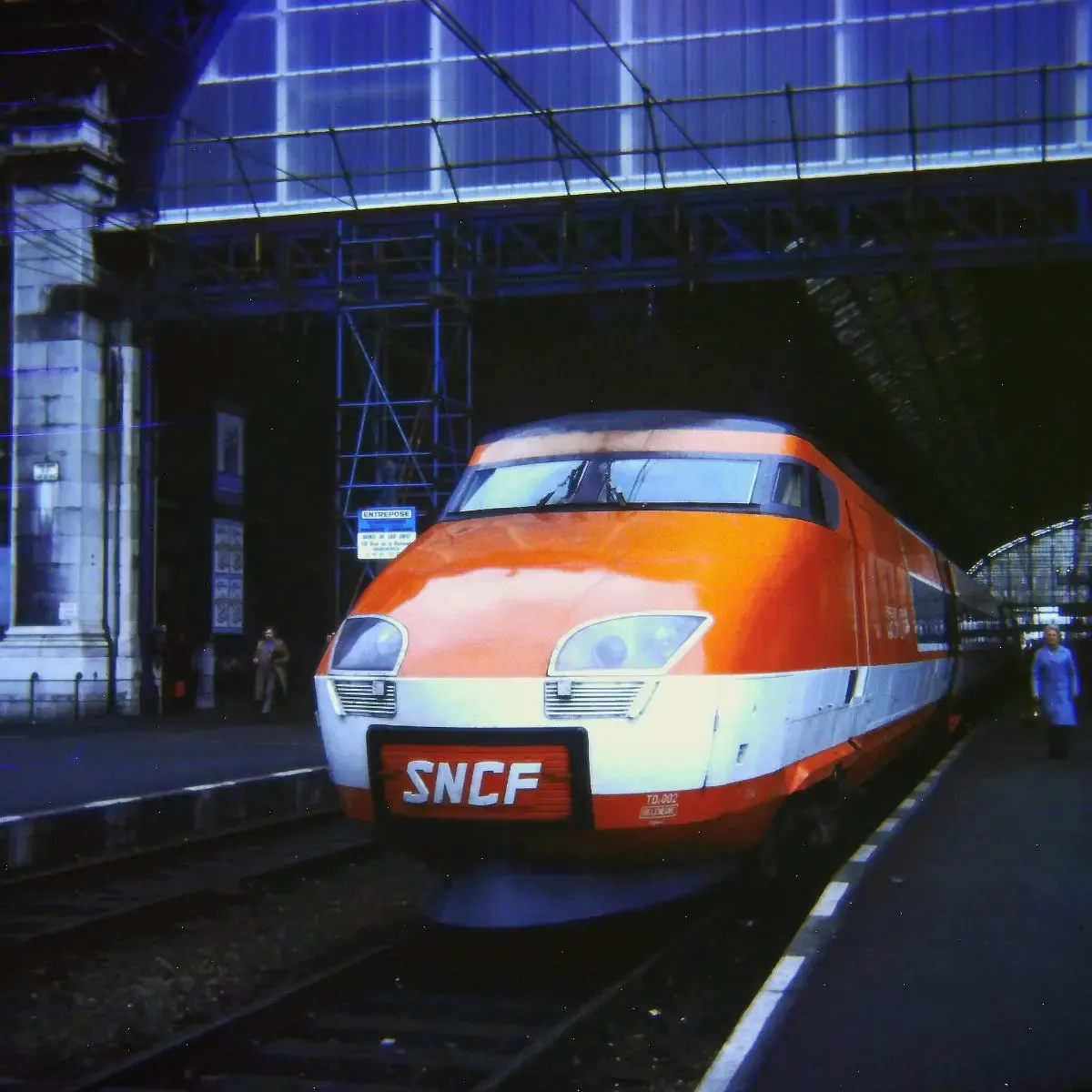
Developing the train technology itself posed additional hurdles. Engineers needed to create lightweight yet strong materials for the train's construction. The aerodynamic design, aimed at minimizing air resistance, required extensive research and testing. Simultaneously, the development of sophisticated braking systems was crucial to ensure that the trains could stop safely from high speeds.
Funding was another major obstacle. The project's initial costs were staggering, prompting rigorous debate over budget allocations and financial sustainability. The French government and public had to be convinced that the benefits of high-speed rail would justify the substantial investment. This included not only the cost of developing and deploying the trains but also the extensive infrastructure required, from specialized tracks to new stations.
Despite these formidable challenges, a series of pilot projects and prototypes in the late 1970s helped to refine the technology and address many of the initial concerns. These early tests were crucial in proving the viability of high-speed rail, ultimately paving the way for the TGV's successful debut in the early 1980s.
Engineering Breakthroughs and Innovations
The engineering breakthroughs and innovations that defined the TGV project were nothing short of revolutionary, setting new standards in rail technology and efficiency.
One of the critical areas of focus was the train's lightweight construction and power-to-weight ratio. Engineers opted for materials such as aluminum and advanced composites, which not only reduced the weight but also enhanced the train's structural integrity. This choice of materials was pivotal in enabling the TGV to achieve high speeds while maintaining safety.
Another significant innovation was the train's aerodynamic design. Extensive wind tunnel testing and computer simulations were conducted to refine the shape of the TGV, reducing drag and improving fuel efficiency. The sleek, pointed nose and streamlined body minimized air resistance, allowing the train to glide through the air at impressive speeds.
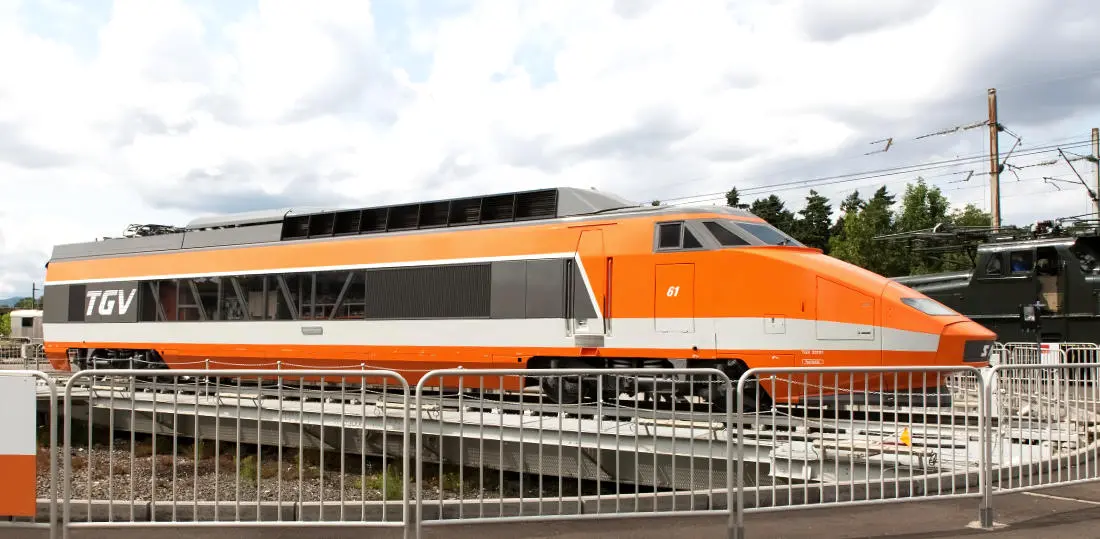
The development of advanced braking systems was equally crucial. Traditional braking mechanisms were insufficient for the high velocities the TGV aimed to achieve. Engineers devised sophisticated braking systems that included dynamic braking, which converts the train's kinetic energy into electrical energy that can be dissipated or reused. This not only improved safety but also contributed to the train's overall energy efficiency.
Signaling technology also saw remarkable advancements. The TGV's high-speed operations necessitated a new level of precision in train control. Engineers developed cutting-edge signaling systems that allowed real-time communication between the train and the control center, ensuring safe and efficient management of multiple high-speed trains on the same network. These systems were designed to automatically adjust speeds and distances between trains, minimizing the risk of collisions.
The train's power supply systems were another area of innovation. The TGV uses an overhead electric line to draw power, which required the development of high-capacity transformers and efficient current collection systems. These technological advancements ensured that the trains could maintain high speeds over long distances without interruptions.
These engineering innovations collectively contributed to the TGV's success, establishing it as a benchmark in high-speed rail technology. The focus on lightweight materials, aerodynamic design, advanced braking, sophisticated signaling, and efficient power supply systems allowed the TGV to achieve unprecedented speeds and set new standards for rail travel.
The Inaugural Journey: A New Era of Rail Travel
On September 27, 1981, a significant milestone in rail travel was achieved when the first TGV train embarked on its maiden journey from Paris to Lyon. This inaugural trip, covering approximately 300 kilometers (186 miles) in just over two hours, was a demonstration of the technological prowess and engineering excellence that the TGV represented. The journey was more than a mere transportation event; it was a showcase of French innovation and a testament to years of dedicated research and development.
As the sleek, aerodynamic train departed from Paris, it symbolized the culmination of over a decade of planning, testing, and overcoming numerous challenges. This historic journey was not only about speed but also about redefining passenger experience. Travelers marveled at the spacious seating, the smoothness of the ride, and the overall efficiency that the TGV promised. The speed and convenience offered by the TGV were unparalleled, setting a new standard for rail travel that would be emulated worldwide.
The successful operation of the TGV on this route was a clear signal to the world that high-speed rail was not just a futuristic dream but a present-day reality. The sight of the TGV speeding through the French countryside captured the imagination of the public and the media, earning widespread acclaim and solidifying its status as a revolutionary advancement in transportation.
This landmark event also had broader implications for the transportation industry. It demonstrated the viability of high-speed rail as a practical and sustainable alternative to air travel, particularly for medium-distance routes. The inaugural journey thus marked the beginning of a new era, one where high-speed trains would play a crucial role in connecting cities and regions more efficiently than ever before.
Expansion of the TGV Network Across France
The rapid success of the TGV spurred an ambitious expansion of its network across France. Following the initial Paris-Lyon route, new lines quickly emerged to connect other major cities. By the late 1980s, routes extending to Marseille and Lille were operational, drastically shortening travel times and facilitating economic growth in these regions. The establishment of the LGV Atlantique in 1989, connecting Paris to the western cities of Le Mans and Tours, further underscored the TGV’s growing influence.
The 1990s saw even more aggressive expansion, with the LGV Nord line connecting Paris to Lille and eventually extending to the Channel Tunnel, creating a seamless high-speed link to London and Brussels. The LGV Méditerranée, inaugurated in 2001, brought the sun-drenched coastlines of the Mediterranean closer to the capital, reducing the journey time from Paris to Marseille to just over three hours.
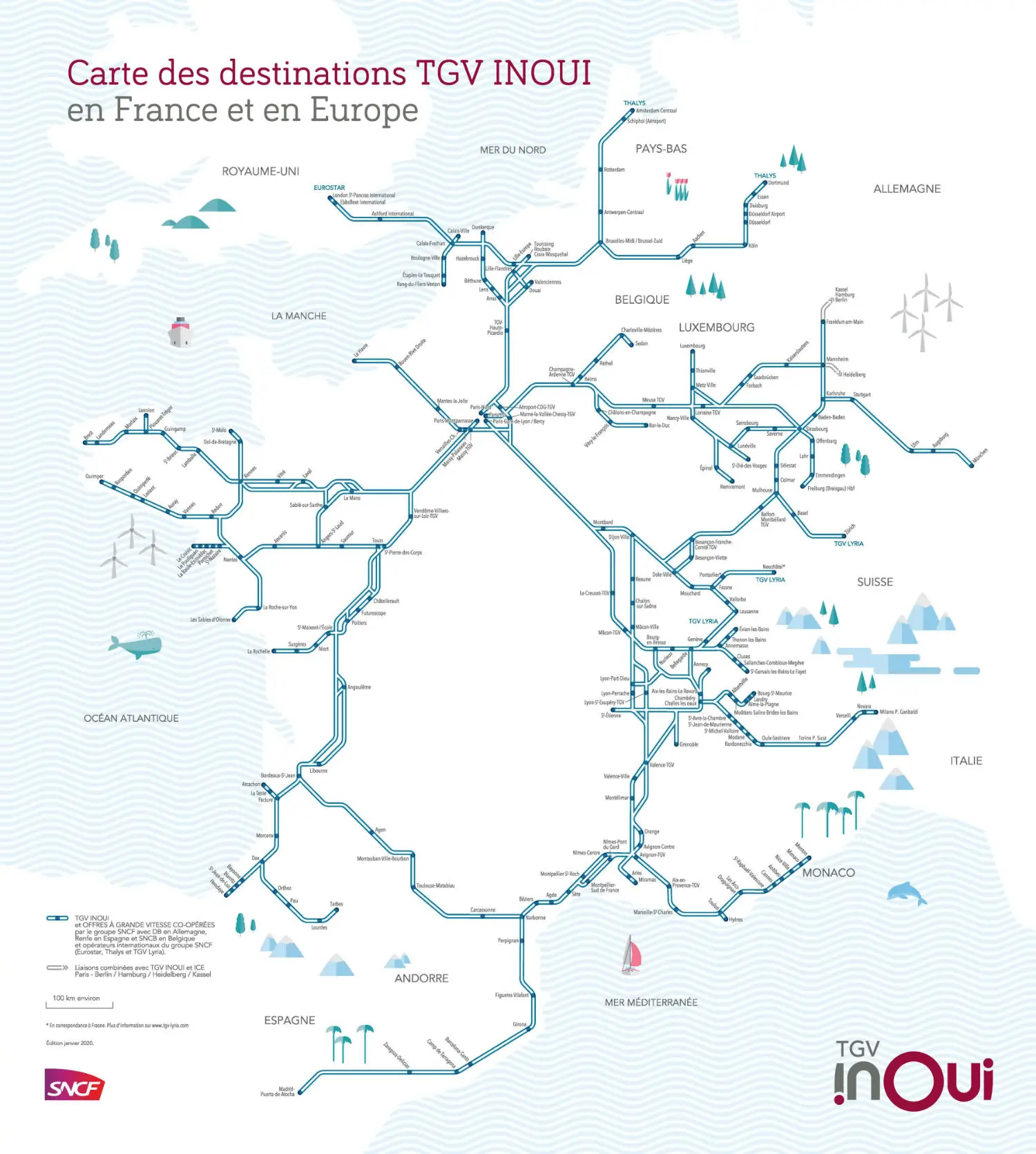
Strategic investments were made to enhance connectivity and ensure that the benefits of high-speed rail reached as many regions as possible. The LGV Est, launched in 2007, connected Paris to Strasbourg, offering faster travel to eastern France and fostering closer ties with Germany. The LGV Rhin-Rhône, completed in phases beginning in 2011, further extended the network's reach into central and eastern regions.
These expansions were not just about speed; they aimed to create a cohesive and efficient transportation network that would rival air travel for convenience and environmental sustainability. Each new line integrated cutting-edge technology, ensuring safety and reliability while minimizing environmental impact.
With each new route, the TGV network redefined the geographic and economic landscape of France, transforming travel dynamics and boosting regional development. The ongoing expansion efforts underscore the enduring commitment to innovation and excellence that has defined the TGV from its inception.
Record-Breaking Speeds and Achievements
The TGV has consistently pushed the boundaries of what is possible in rail travel, setting multiple speed records that have captivated the world.
A pinnacle moment occurred on April 3, 2007, when a specially modified TGV train achieved an unprecedented speed of 574.8 kilometers per hour (357.2 miles per hour) during a test run on the LGV Est high-speed line. This record-breaking feat demonstrated not only the TGV's cutting-edge engineering but also its potential to continually advance the limits of high-speed rail technology.
This remarkable achievement was the result of years of meticulous research and development. Engineers made several modifications to the train and tracks to facilitate the record attempt, including enhancing the train's aerodynamics and using reinforced wheels and rails.
In addition to speed records, the TGV has garnered numerous awards and accolades for its contributions to rail travel and engineering. It has been recognized for its energy efficiency, reducing the carbon footprint associated with transportation. The TGV's advanced braking systems and signaling technologies have set new standards in safety, ensuring that high-speed travel is both reliable and secure.
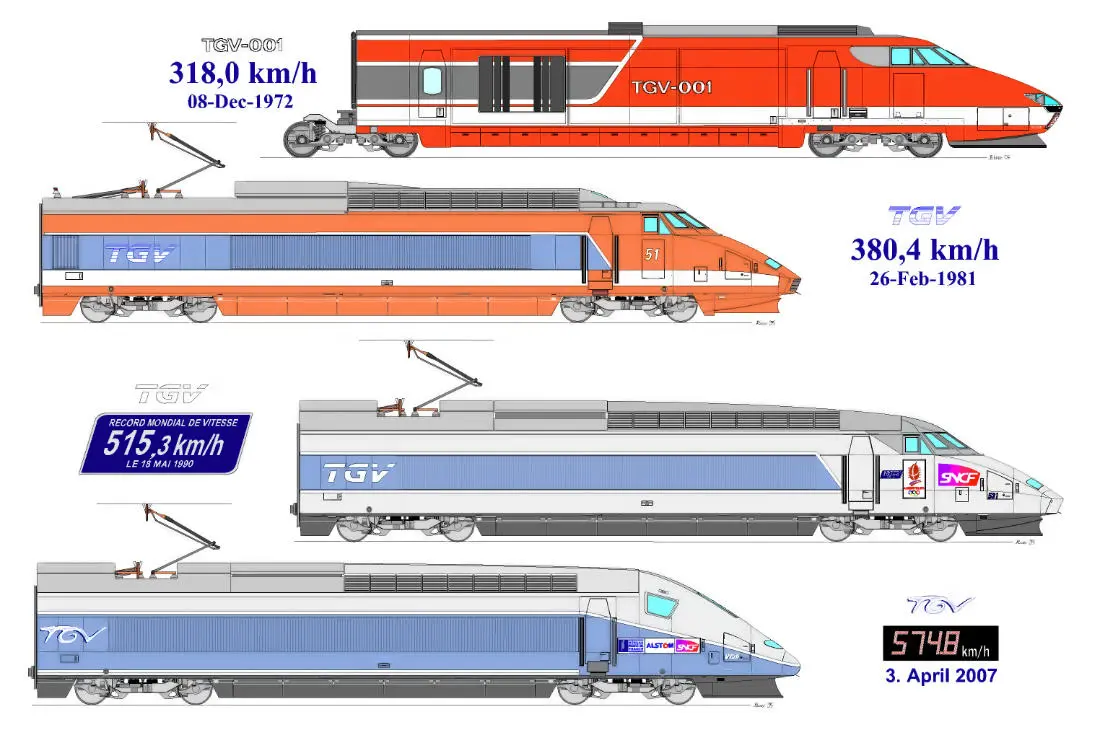
The success of these high-speed records has had a far-reaching impact, influencing the design and development of high-speed rail systems worldwide. Countries looking to implement or upgrade their high-speed rail networks often look to the TGV as a benchmark for excellence. This ongoing quest for speed and efficiency underscores the TGV's role as a trailblazer in the global transportation landscape.
International Influence and Collaboration
The TGV's groundbreaking success has made it a blueprint for high-speed rail projects globally. Its influence is evident in the rapid development of high-speed rail networks in countries like Spain, Italy, and South Korea. Spanish rail operator RENFE collaborated closely with French engineers to develop the AVE (Alta Velocidad Española) trains, which now connect major Spanish cities with remarkable speed and efficiency. Similarly, Italy's Trenitalia and NTV took inspiration from the TGV when designing their high-speed services, Frecciarossa and Italo, respectively.
China, home to the world’s most extensive high-speed rail network, also benefited from the technological advances pioneered by the TGV. Early Chinese high-speed trains incorporated design principles and technology transfers from their French counterparts, demonstrating the global reach of TGV's engineering innovations. Additionally, Japan's Shinkansen system, while independently developed, has engaged in several exchanges with TGV engineers, leading to mutual enhancements in high-speed rail technology.
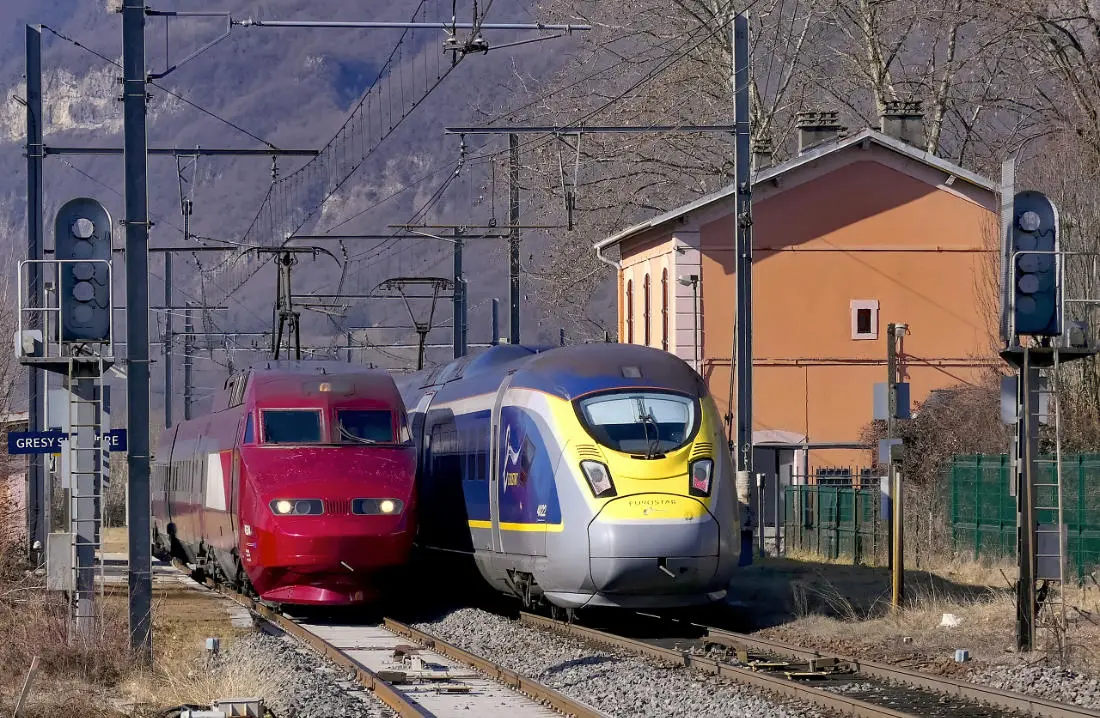
Beyond individual countries, the TGV has also been a focal point for multinational projects. The Eurostar service, which connects London with Paris and Brussels through the Channel Tunnel, represents a significant international collaboration. This service utilizes TGV technology and expertise, facilitating seamless high-speed travel between the United Kingdom and continental Europe. Another notable collaboration is the Thalys network, linking France, Belgium, the Netherlands, and Germany with TGV-derived trains, fostering greater regional connectivity.
These collaborations highlight the TGV's role as a catalyst for high-speed rail development worldwide. By sharing expertise and technological advancements, the TGV has played a crucial part in shaping modern transportation networks across the globe.
Challenges and Criticisms Over the Years
The TGV, while a remarkable achievement in rail transportation, has not been without its challenges and criticisms. One of the most significant issues has been the high construction and maintenance costs associated with building and operating high-speed rail lines. Developing the specialized tracks, stations, and infrastructure required for the TGV has demanded substantial financial investments, leading to debates about the allocation of public funds and the economic viability of such projects.
Environmental concerns have also been a point of contention. While the TGV is praised for its energy efficiency and lower carbon footprint compared to short-haul flights, the construction of new high-speed lines often involves significant land use and potential disruption to natural habitats. Critics argue that these ecological impacts must be carefully weighed against the benefits of high-speed rail.
Another area of criticism revolves around regional disparities in service availability. The TGV primarily serves major cities and densely populated regions, which has led to accusations of neglecting rural and less economically developed areas. This has sparked discussions about the equitable distribution of transportation resources and the need for comprehensive regional development strategies.
Additionally, there have been concerns about the impact of the TGV on other forms of public transportation. Some argue that the focus on high-speed rail has diverted attention and funding away from local and regional train services, as well as other public transit systems. This has raised questions about whether a balanced approach to transportation infrastructure might better serve the overall mobility needs of the population.
Operational challenges have also surfaced over the years. Maintaining punctuality and managing the logistics of running multiple high-speed trains on the same network require sophisticated coordination and robust infrastructure. Technical failures, though rare, can lead to significant delays and disruptions, affecting passenger confidence and satisfaction.
Conclusion: The Lasting Legacy of the TGV
The TGV’s journey from a conceptual vision to a globally recognized symbol of high-speed rail highlights the remarkable achievements in engineering, technology, and transportation policy. Over the decades, it has revolutionized travel within France and beyond, setting new standards for speed, efficiency, and passenger comfort. The TGV’s pioneering efforts have spurred significant advancements in high-speed rail technology, influencing the development of similar systems around the world and fostering international collaborations that continue to drive innovation in the rail industry.
One of the most profound impacts of the TGV is its role in enhancing connectivity and economic growth. By dramatically reducing travel times between major cities, the TGV has facilitated greater economic integration, enabling businesses to expand their reach and fostering tourism. Its success has also underscored the importance of investing in advanced transportation infrastructure, demonstrating that such investments can yield substantial long-term benefits.
Despite facing challenges such as high costs, environmental concerns, and regional disparities, the TGV has consistently adapted and evolved. Its commitment to sustainability, reflected in its energy-efficient operations and ongoing technological improvements, positions it as a crucial player in the global effort to reduce carbon emissions and promote eco-friendly travel solutions.
As the TGV continues to advance, it serves as a testament to what can be achieved when ambition, innovation, and engineering excellence converge. Its legacy is not just one of high-speed travel but also of continuous improvement and resilience, inspiring future generations to push the boundaries of what is possible in transportation.

